Now worth a GO

Three and a half out of ten, that’s what I rated Datsun’s original GO back in 2015. It was so lacking that my suggestion was to rather buy something second hand… In the ensuing years, though, the market has changed significantly, with many new competitors entering the entry-level segment – and prices going up (as with everything in recent years).
Nissan South Africa knew, therefore, that it had to ensure the updated GO addressed all its previous issues and offered true value for money. After a week of driving the top-of-the-range GO Lux, I’ve been pleasantly surprised by the transformation…
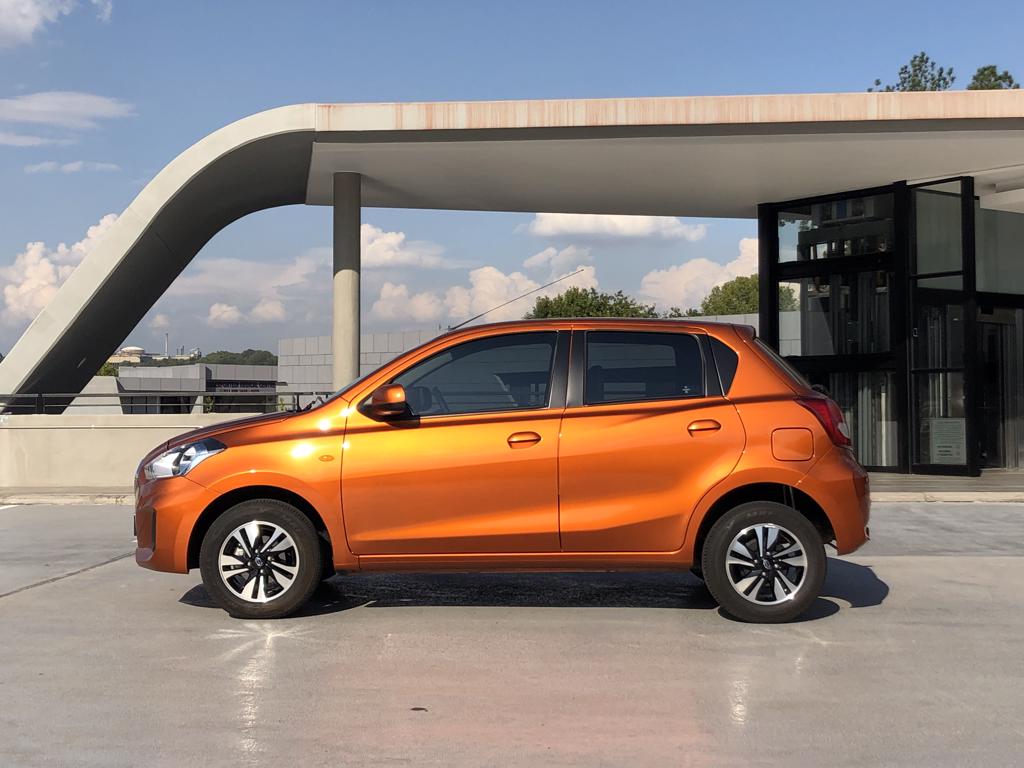
Now with some safety features
This was far and away the biggest criticism of the original GO – it had no form of modern safety equipment save for some front three-point seatbelts (the rears were simple lap belts). Happily, Datsun has brought the GO up to segment standard with dual front airbags, anti-lock brakes, three-point belts front and rear (plus a centre lap belt), as well as central locking and an immobiliser.
Interestingly, it’s gone even beyond, adding reverse parking sensors. All models in the range receive these safety features – and retain the follow-me-home headlamp delay fitted to the original car, as well as a basic on-board computer.
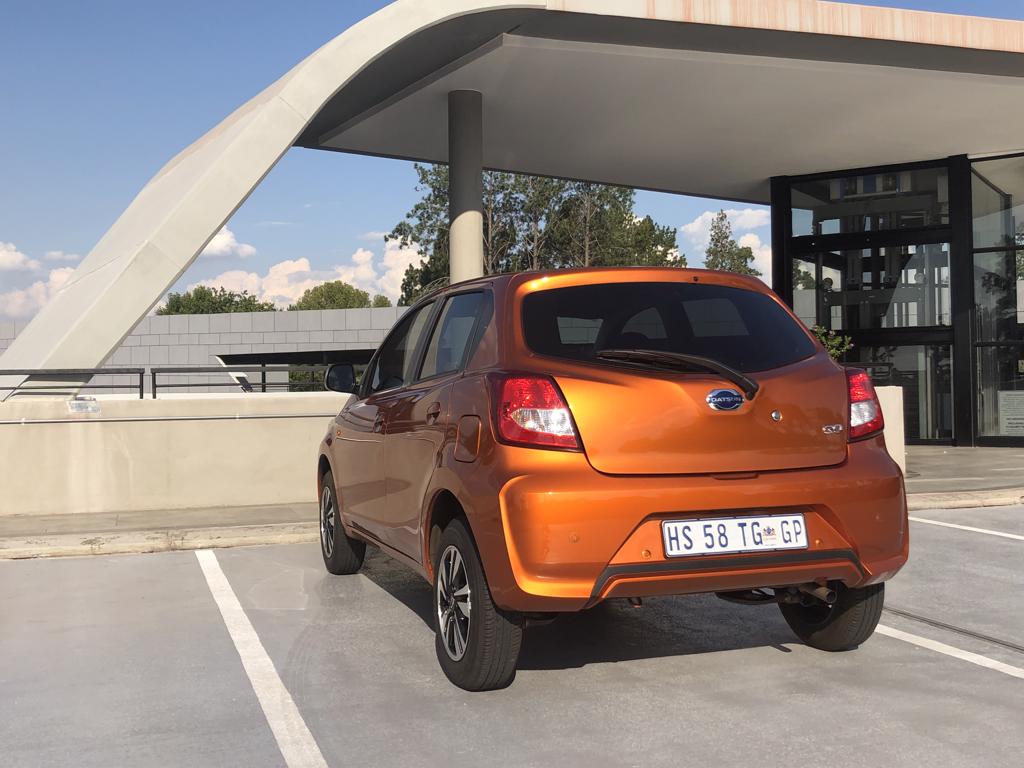
Modernised interior
Gone is the beige interior trim, with its gaping dashboard shelf (there was no cubby lid previously) and pull-type handbrake, and in its place is a redesigned dashboard (with a proper cubby!) in black, accented by a mix of silver and carbon fibre-look trim. It’s a simple design that works well, fitting in with some Nissan models and creating a far more modern feel to the interior.
This is, obviously, also aided by the standard-fit seven-inch touchscreen infotainment system – making the GO one of the few vehicles in its class to offer such a luxury. What’s more, it offers Android and Apple connectivity – and is simple and intuitive to use.
Gone from the interior, too, is the awful and uncomfortable front bench seat – replaced by two normal two-piece seats. They are flat but comfortable enough (so long as you’re not attempting to test the GO’s cornering ability). Thanks to the split front seats, there’s also now room for a couple of cupholders (and one in the back).
Overall build quality is good, though some niggles with sharp trim edges remain.
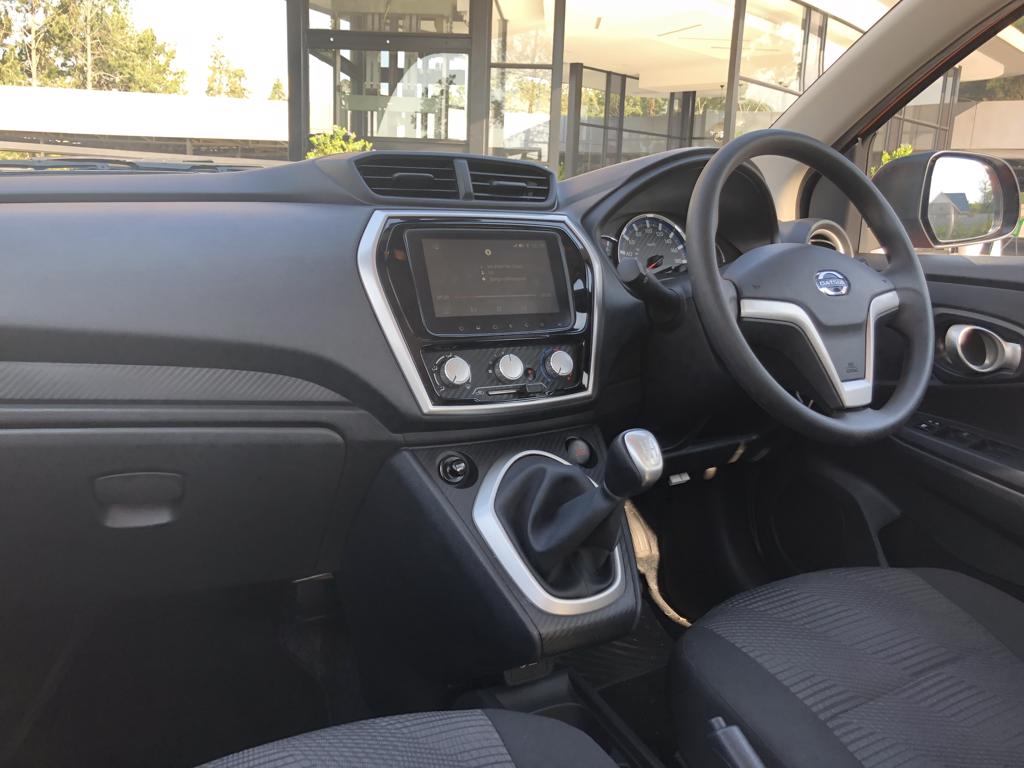
Less cutesiness in the looks
Still instantly recognisable, the new GO features a revised grille and sharper detailing in its front and rear bumpers, accented by some more carbon-fibre looking bits and – exclusive to the Lux – a pair of vertical LED daytime running lights at the outer edges of the front bumper.
The Lux also wears a neat set of 14-inch alloys. Overall, it’s a smart package – especially in this orange paintwork (yes, it’s simply called orange). Oh, and all the panels seemed to line up nicely on this car…
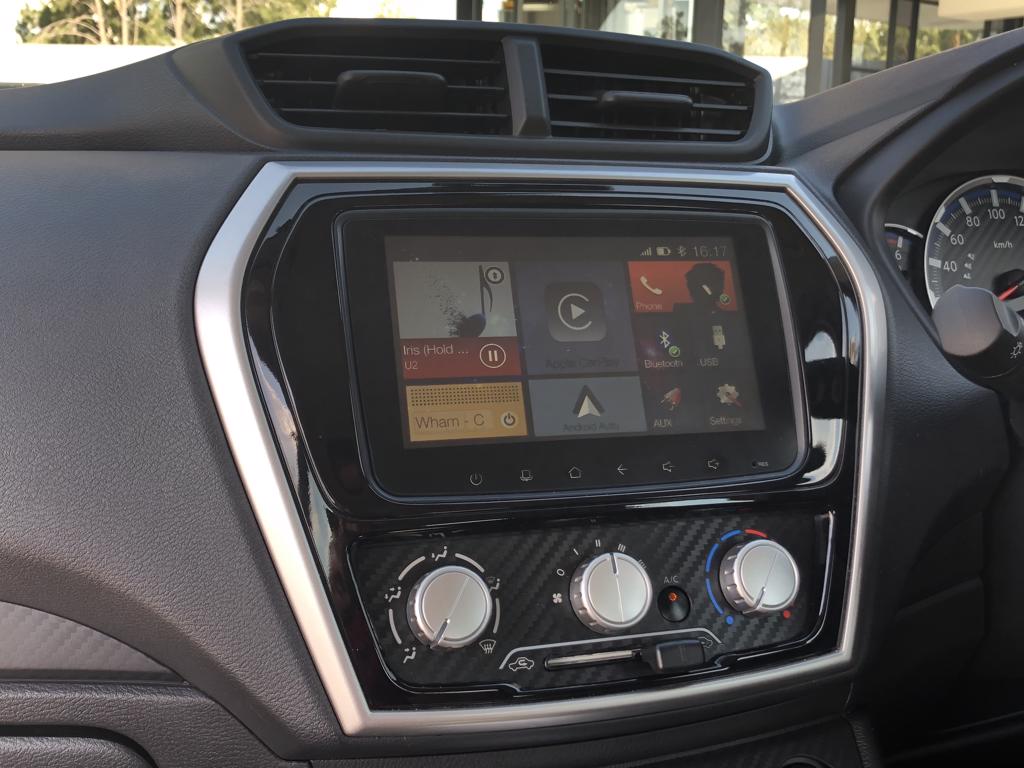
Same GO
Under the bonnet is the familiar 1,2-litre, three-cylinder petrol engine that produces a mere 50 kW and 104 Nm, which is paired with a five-speed manual gearbox. While the engine is loud and gruff and the gearshift cannot be described as smooth, the powertrain makes the most of what it has to offer by combining good low-down torque and a smooth power delivery with short gearing.
This means that one can shift up to top gear by 60 km/h, cruise on the highway with juuust enough in reserve to overtake, and, importantly save fuel. Datsun claims the GO will consume just 5,2 l/100 km.
The GO rides on tall suspension which means it will roll through bends (like I said, best to not test its cornering ability), but also that it manages South Africa’s rough roads very well while affording a comfortable ride. Road noise is quite high, though. However, it’s exceptionally manoeuvrable … say goodbye to three-point turns!
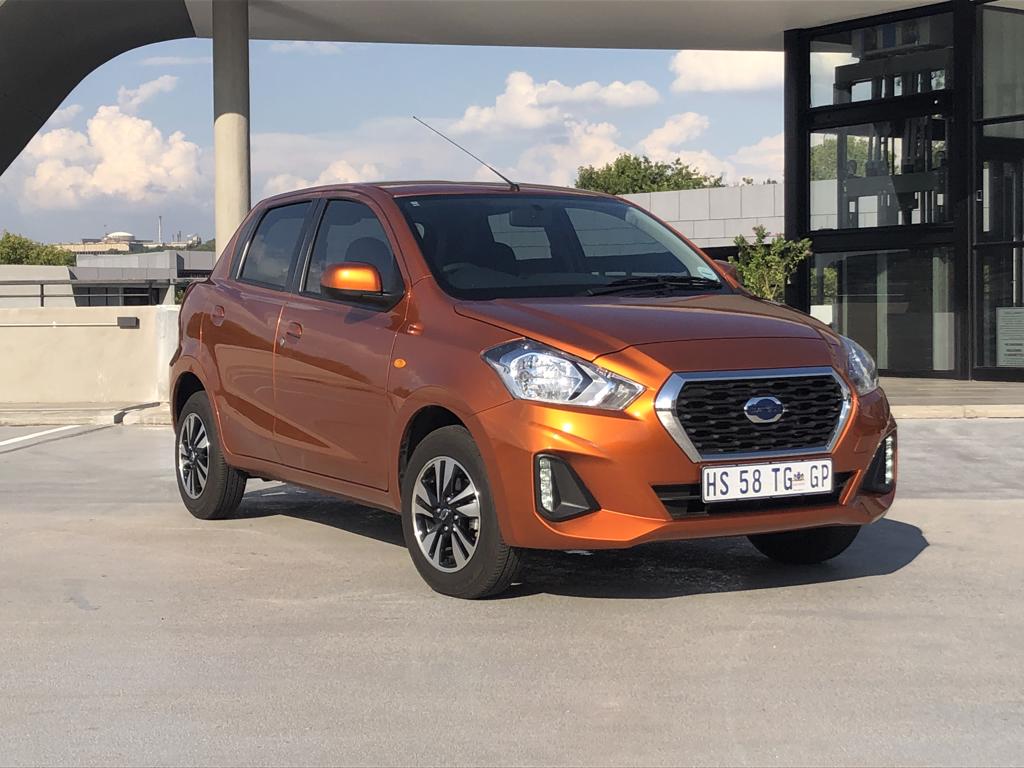
More Datsun, more competition
The 2019 Datsun GO is a significant improvement on its predecessor. It’s amazing the difference what we now consider basic safety equipment and a modernised interior can make. The car now feels far more stable and controllable in emergency braking situations and it’s now comfortable to drive.
However, it’s price has crept up to R166 300 for this Lux model, which means it goes head to head with serious competition from Suzuki (the Celerio 1.0 GL retails for R156 900), Toyota (the Etios 1.5 Xi at R179 500), Honda (its Brio 1.2 Trend goes for R164 200) and Renault (whose Kwid 1.0 Dynamique costs a mere R143 500 – but does without much of the safety equipment).
At about R17 000 less than the Lux, the GO Mid probably offers the better value for money, but, either way, it’s now a genuinely worthy budget car option – and not just because of the price. Datsun has also doubled the warranty period to six years/150 000 km, which also roadside assistance.
CyberStoep rating: 6/10
Published by
Charleen Clarke
focusmagsa




